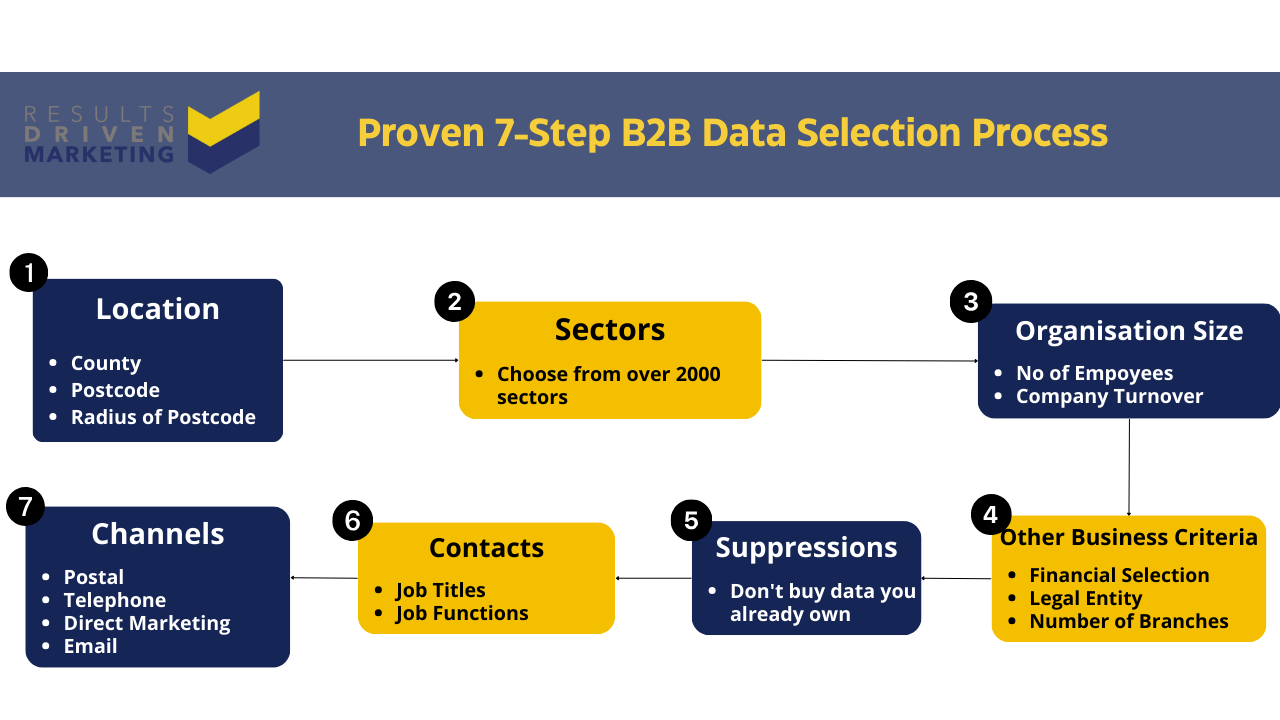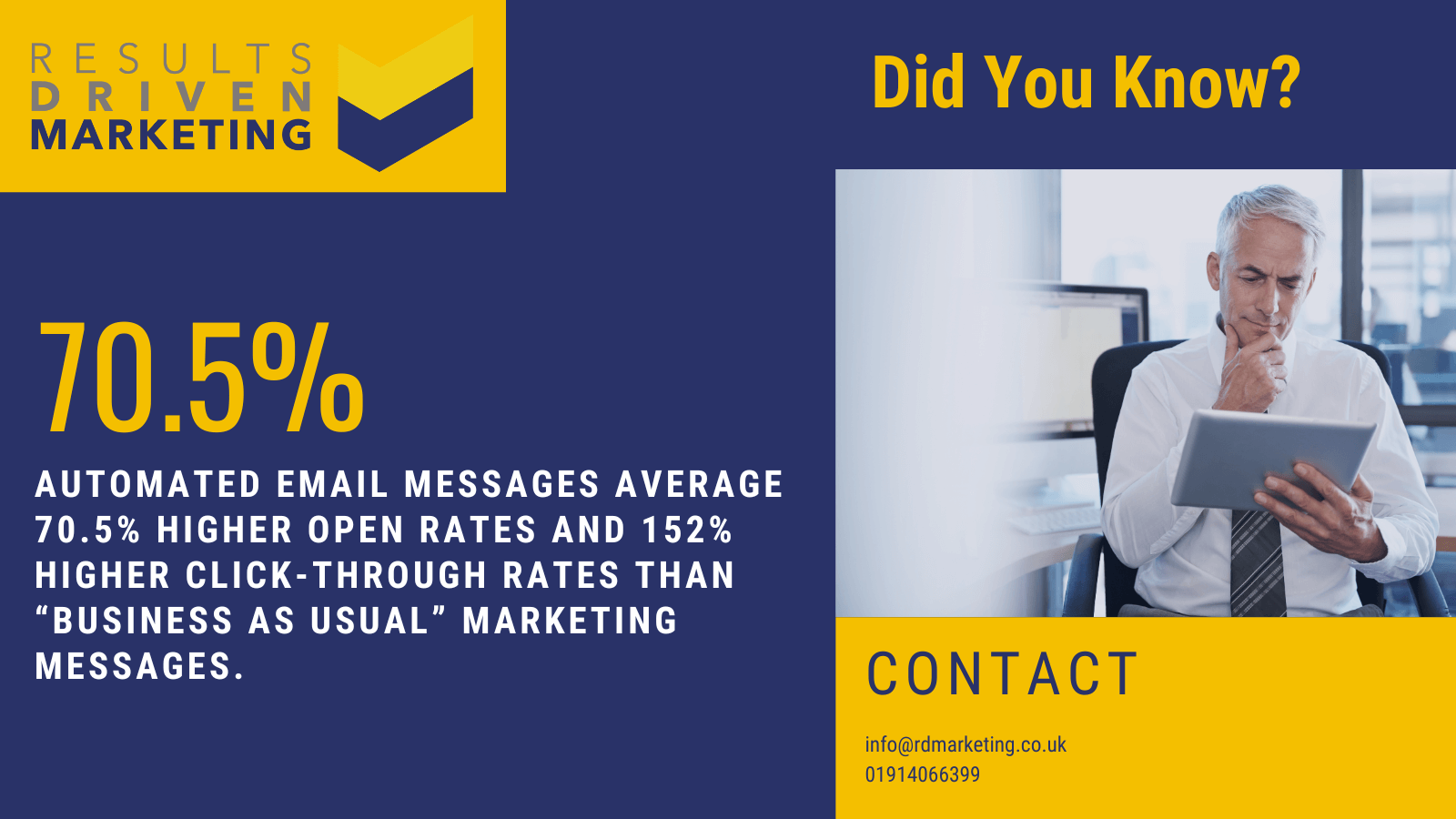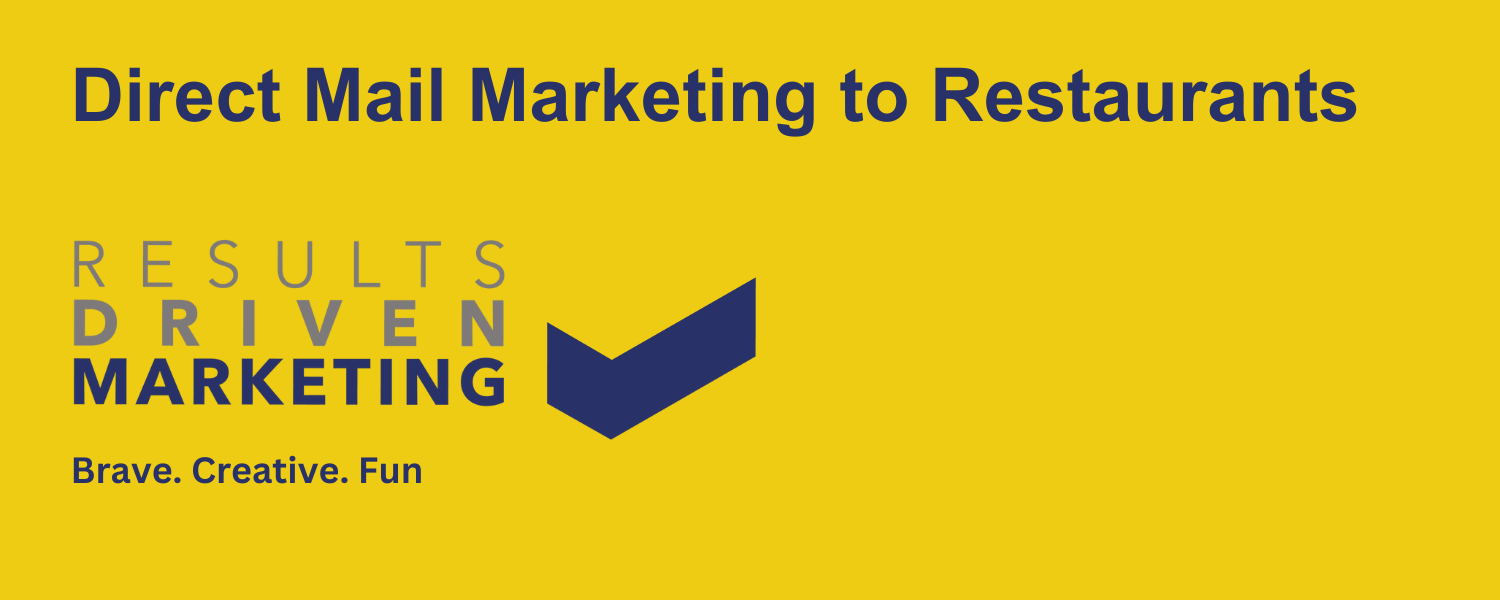
Restaurants Database
In the dynamic food and hospitality sector, a reliable restaurants database is more than just a tool; it’s a lifeline for businesses looking to make meaningful connections. Companies often grapple with marketing challenges, ranging from identifying the right establishments to ineffective outreach strategies, due to scattered or outdated information. These challenges can hamper marketing efforts, making it crucial to have access to precise and comprehensive data.
Enter our UK Restaurants Database, a curated list tailored to address these very concerns. Beyond just names and locations, our restaurants database ensures businesses can directly communicate with decision-makers, enhancing the effectiveness of their marketing campaigns.
This article will delve into the myriad obstacles faced in restaurant marketing and highlight how our comprehensive database provides solutions to transform these challenges into opportunities.
Table of contents:
What is the UK Restaurants Database?
Used to generate leads and new business, our UK Restaurants Database is a marketing tool used by companies looking to advertise their services directly to principal contacts within restaurants.
UK Restaurants Database provides a fantastic platform from which to launch targeted email campaigns to generate new business.
Who uses the UK Restaurants Database?
It is successfully used by software developers and suppliers, phone system suppliers, cleaning and maintenance supplies, till systems, food and drink distributors, catering equipment, furniture suppliers and many more…
Where does the UK Restaurants Database originate?
We work with the UK’s leading data aggregator who have been voted b2b data supplier of the year for a record five times.
Established for over thirty years, they take the very best parts of the top five data houses in the UK to compile their master file of over 3.25 million records, which we supply from.
How many records does the UK Restaurants Database contain?
At the time of writing (we operate from a live database)…
The UK Restaurants Database contains contact information for 77,177 contacts within restaurants across the UK.
What does a record on our UK Restaurants Database contain?
Each record can come complete with:
- Company name
- Full postal address
- Contact name
- Direct email address (11,724 records)
- TPS checked telephone number (47,210 records)
- Industry sector
- Number of employees
- Company turnover
Can the UK Restaurants Database be filtered?
Absolutely. We understand that no two customers the same and encourage each to discuss their individual needs with us.
Our consultants are more than happy to talk you through we can go about making this meet your specific markets, exactly.

How accurate is the UK Restaurants Database?
Every file we supply is also guaranteed accurate to industry high standards:
- 98% postal address accuracy
- 90% telephone number and contact name accuracy
- 90% email address accuracy
Should we fall below any of these minimum accuracy guarantees we are obliged to provide you with a like for like replacement or pro-rata refund.
This gives our clients total peace of mind when purchasing from us.
Is the UK Restaurants Database GDPR Compliant?
Compliance is something that we place massive importance on. We wouldn’t be able to stand by our company ethos of only supplying the best b2b data available if we didn’t.
If you have any concerns with regards the compliancy of our UK Restaurants Database or any of our b2b data solutions, feel free to call us on 0191 406 6399 and speak to us directly.
What licence terms are offered on the UK Restaurants Database?
All our b2b data is made available on a 12 month multi-use licence which means you can use it as much as you like.
What format does the the UK Restaurants Database come in?
Our b2b data is sent you via secure email transfer in either Excel or .csv format.

Marketing to Restaurants
Challenges of Marketing Products and Services to Restaurants
Here, we’ll be delving into the world of marketing products and services to restaurants—a realm that’s as exciting and flavourful as it is complex. Restaurant owners are not just business-minded; they’re also food enthusiasts, innovators, and creators. This makes marketing to them an adventure of its own, with its own set of unique challenges.
Let’s begin our journey by addressing the elephant in the room, shall we?
The Unpredictability of the Restaurant Industry
The restaurant industry, much like the secret recipe of grandma’s special sauce, can be quite unpredictable. One day it’s all about gluten-free, the next it’s keto-friendly. Trends emerge and fade faster than a soufflé rises and falls. For marketers, it’s crucial to stay updated on these trends and effectively pitch your products and services in a way that aligns with the current gastronomic climate.
The Diversity of Restaurant Types
No two restaurants are the same. From fast food to fine dining, coffee shops to gastro pubs, every restaurant has its unique needs, customer base, and business model. Consequently, a one-size-fits-all approach in marketing will fall flat faster than an undercooked pancake. The challenge here lies in tailoring marketing strategies to each restaurant’s specific needs and goals.
Tight Budgets and Margins
In the restaurant industry, margins are as thin as a perfectly rolled out pizza dough. Most restaurants operate on tight budgets, making them cautious about every expenditure. This means you need to convincingly demonstrate the value proposition of your product or service, illustrating how it will help improve their bottom line, whether by increasing efficiency, improving customer experience, or other benefits.
The Decision-Maker Dilemma
Who makes the decisions in restaurants? Is it the owner, the chef, or the manager? In smaller establishments, it might be all three! Knowing who to target your marketing efforts towards is key but can prove to be a challenging task.
Building Trust
The food industry thrives on trust. Chefs and restaurant owners are very particular about the quality of their ingredients and the equipment they use. For them, a subpar product could mean a disaster in the making. Therefore, earning their trust is a major challenge, requiring transparency, quality assurances, and, quite often, a dash of patience.
Time Constraints
Running a restaurant is a busy job. This means restaurant decision-makers rarely have time to sit through long sales pitches or sort through wordy product descriptions. Crafting short yet impactful messages that can capture their attention is another hurdle marketers must overcome.
Rapid Technological Advancements
From state-of-the-art kitchen equipment to advanced POS systems and customer relationship management tools, technology plays a huge role in the modern restaurant business. Keeping abreast of these tech advancements and convincingly integrating them into your marketing strategy is yet another challenging aspect of selling to restaurants.
In spite of these challenges, the rewards of successfully marketing to restaurants can be substantial. A well-structured, understanding, and patient approach is needed to break through the noise, grab attention, and most importantly, build a lasting business relationship with restaurants.
So, next time you take a bite of your favourite restaurant meal, give a thought to the marketing marvels that might have contributed to your culinary experience! Bon appétit!
Crafting Sizzling Value Propositions: A Savoury Guide to Selling to a Restaurants Database
Let’s spice up our conversation with a mouthwatering topic – crafting compelling value propositions when selling products and services to restaurants. Yes, we are talking about making the most out of your restaurants database, an often under appreciated but goldmine of a resource.
But first, let’s take a moment to understand what a value proposition is. Simply put, it’s a clear statement that reflects the specific benefits your customers can expect from your products and services, addressing how you solve their problems, what benefits they can expect, and why you’re a better choice than the competition.
Now, let’s get cooking with the recipe for a compelling value proposition aimed at your restaurants database.
Tailoring to Specific Needs
No two restaurants are the same, each with its unique set of needs, just like every dish has its unique set of ingredients. Tailoring your value proposition to these specific needs can significantly increase its effectiveness. Are you offering a state-of-the-art POS system? Highlight how it can improve their efficiency. Selling high-quality kitchen equipment? Discuss the long-term cost-saving benefits.
Differentiating Yourself from the Competition
In a market as sizzling as the restaurant industry, competition is expected. You need to convincingly communicate why your product or service is a better choice than others in the market. What makes you unique? Is it your top-notch customer service, your exceptional product quality, or your competitive pricing? Make sure this unique selling proposition stands out in your communication.
Demonstrating Tangible Results
Restaurant owners are looking for results. They want to know that the money they invest will yield a positive return, whether it’s an increase in customer satisfaction, efficiency, or overall revenue. Therefore, your value proposition should explicitly outline the tangible results they can expect.
Keeping It Simple and Clear
Time is a precious ingredient in the busy world of restaurants. You want your value proposition to be clear, concise, and easy to digest, much like the perfect appetiser. Avoid jargon and keep your language simple and straightforward, making it easy for your potential customers to understand the benefits of your offer.
Building Trust with your List of Restaurants
Trust is the secret sauce that holds everything together in the restaurant industry. Assuring your potential customers of your credibility, whether through testimonials, case studies, or quality certifications, can help strengthen your value proposition.
Creating compelling value propositions for your restaurants database can seem like a daunting task, but with the right blend of understanding, tailoring, differentiating, demonstrating results, simplicity, and trust, you can make your offers as irresistible as a perfectly baked pizza fresh out of the oven. So, it’s time to don your apron and get cooking – those emails won’t write themselves!
The Benefits of Using a Restaurants Database for Marketing
In today’s digital age, marketing to specific industries, such as the restaurant sector, requires precision, efficiency, and a deep understanding of the target audience. The vastness of the restaurant industry, encompassing everything from fine dining establishments to quaint coffee shops and bustling fast-food chains, can often leave marketers overwhelmed.
This is where a restaurants database steps in as a game-changer. A comprehensive restaurants database not only simplifies the marketing process but can also significantly enhance the effectiveness of your campaigns. Here’s how:
Tailored Outreach
With a robust restaurants database, you can segment your outreach based on various parameters like restaurant type, location, cuisine, or even average customer ratings. This allows you to tailor your messaging to resonate specifically with each segment, increasing the likelihood of engagement.
Efficiency and Time-saving
Gone are the days of manually hunting for contact details or blindly sending out generic pitches. A restaurants database provides you with instant access to a wealth of information, ensuring you can launch campaigns rapidly and reach the right decision-makers from the get-go.
Informed Decision Making
A comprehensive database isn’t just a list of names and addresses. It can offer insights into restaurant operations, their preferred suppliers, and even financial health. Such insights empower you to make informed decisions, tweaking your products or services to match the exact needs of your target audience.
Cost-effective
Think of all the resources spent on researching, prospecting, and cold outreach. By investing in a restaurants database, you eliminate much of the groundwork, ensuring your marketing budget is spent more on strategy and execution than on preliminary research.
Building Lasting Relationships
By having access to a vast array of contacts, you can focus on nurturing long-term relationships. Regular engagement, coupled with tailored solutions, can turn a simple lead into a loyal client, fostering trust and collaboration.
Stay Ahead of the Curve
In a competitive market, having an edge is invaluable. A restaurants database allows you to monitor emerging trends, track new establishments, and keep an eye on potential opportunities, ensuring you’re always one step ahead.
Expanding Horizons
Planning to expand your business to a new region or targeting a new segment within the restaurant industry? With a restaurants database, geographical barriers diminish, and the vast landscape of the restaurant world becomes accessible at your fingertips.
Enhance Product Development
Feedback is a goldmine. By engaging with restaurants through a targeted database, you can gather invaluable feedback on your products and services. This information can guide enhancements, innovations, and ensure your offerings are always in line with market demands.

Email marketing to a list of restaurants
Unleashing the Power of Email Marketing: Advantages When Selling Products and Services to Restaurants
Precision Targeting with Restaurants Database
One of the primary advantages of email marketing is the ability to target restaurants directly. With a curated database containing restaurant owners, managers, and decision-makers, businesses can tailor their messages specifically to suit the needs and interests of this audience. This precision targeting ensures that your emails are relevant and increases the likelihood of engagement and conversions.
Cost-Effective Marketing Solution when running email campaigns for the Restaurants Database
For businesses, especially those catering to niche industries like restaurants, managing a cost-effective marketing budget is crucial. Email marketing provides an economical solution compared to traditional advertising methods.
With minimal expenses for email platforms and design, businesses can reach a wide range of restaurants at a fraction of the cost of print or TV advertisements when running email campaigns for the restaurants database.
Personalisation for Enhanced Engagement when running email campaigns for Restaurants Database
Restaurants, like any business, value personalised interactions. Email marketing allows businesses to customise content based on the recipients’ preferences and interests.
Utilising personalised subject lines and dynamic content enables businesses to create a more intimate and engaging experience for restaurant owners, increasing the chances of opening emails and taking desired actions when running email campaigns for the restaurants database.
Showcasing Products and Services when running email campaigns for the Restaurants Database
Email marketing provides an ideal platform for showcasing products and services tailored to restaurants’ needs. Businesses can use visually appealing content, such as product images, videos, or service demos, to demonstrate the value they can bring to restaurants. This visual representation helps restaurants better understand how these offerings can enhance their operations when running email campaigns for the restaurants database.
Building Brand Trust and Credibility when running email campaigns for the Restaurants Database
Establishing trust and credibility is paramount in the restaurant industry. By consistently delivering valuable content and relevant offers through email marketing, businesses can position themselves as industry experts and reliable partners. Valuable insights, expert tips, and case studies can contribute to building a reputable brand image when running email campaigns for the restaurants database.
Driving Website Traffic and Conversions when running email campaigns for the Restaurants Database
Email marketing serves as a gateway to direct traffic to a business’s website. By including relevant calls-to-action (CTAs) in emails, businesses can encourage restaurant owners to visit their website for more information or to make a purchase. Well-crafted CTAs can lead to increased website traffic and higher conversion rates when running email campaigns for the restaurants database.
Tracking and Measuring Performance when running email campaigns for the Restaurants Database
Email marketing platforms provide comprehensive analytics and tracking tools. Businesses can easily measure the performance of their email campaigns, such as open rates, click-through rates, and conversions. This data-driven approach allows for continuous optimisation and refinement of email marketing strategies when running email campaigns for the restaurants database.
Nurturing Long-Term Relationships when running email campaigns for the Restaurants Database
Email marketing allows businesses to nurture long-term relationships with restaurants. By sending regular updates, promotions, and industry news, businesses can stay top-of-mind with their audience. Consistent communication fosters brand loyalty and encourages repeat business from restaurants when running email campaigns for the restaurants database.
Conclusion
Email marketing offers a plethora of benefits for businesses selling products and services to restaurants. With a targeted restaurants database, businesses can precisely reach their desired audience and deliver personalised content. The cost-effectiveness, personalisation capabilities, and tracking tools make email marketing an invaluable tool for showcasing products and services, building trust, and driving sales.
By embracing email marketing as part of their marketing strategy, businesses can establish strong connections with restaurants, leading to increased brand loyalty, repeat business, and continued growth in the dynamic and competitive restaurant industry.
Serving Up Success: Email Marketing Best Practices for Your Restaurants Database
We’re back in the kitchen today, whipping up a storm of marketing strategies. This time, we’re focusing on email marketing, one of the most powerful tools in your toolkit, especially when catering to your restaurants database.
The restaurant industry, with its diverse range of needs and challenges, requires a special touch when it comes to marketing. But with the right ingredients, you can create an email marketing strategy that not only captures attention but also drives conversions. Here are some email marketing best practices to keep in mind:
Segment Your Restaurants Database
All restaurants are not made equal. They range from small family-run coffee shops to multi-national chains, and they each have unique needs. Segmenting your restaurants database allows you to tailor your emails to each group’s specific needs, making your campaigns more relevant and effective.
Craft Compelling Subject Lines for your list of restaurants
The subject line is the first thing your recipient sees, so make sure it packs a punch. Keep it short, engaging, and action-oriented. Remember, you’re competing with a host of other emails, so give your restaurant prospects a good reason to click on yours!
Personalise Your Emails for the Restaurants Database
Personalisation goes beyond just addressing your recipient by their name. Delve deeper. Speak about their specific challenges or acknowledge their unique cuisine or service style. This will not only help you establish a connection but also demonstrate your understanding of the restaurants email list.
Highlight Your Value Proposition for the Restaurants Database
In the body of your email, clearly state the value you’re bringing to the table. Whether it’s high-quality kitchen equipment, cost-effective supply solutions, or innovative POS systems, let your prospect know how your product or service can solve their problems and benefit the restaurants database.
Use a Clear Call to Action (CTA) for the Restaurants Database
What do you want your recipients to do after reading your email? Whether it’s visiting your website, downloading a product brochure, or scheduling a call, make sure you include a clear, compelling CTA for the for the Restaurants Database.
Build Trust with Social Proof for the UK Restaurants Database
Remember, restaurants are all about trust and quality. Include testimonials, case studies, or endorsements from other restaurants you’ve helped. This adds credibility to your offering and reassures your prospects that you can deliver on your promises for the UK restaurants database.
Maintain Consistent Communication with the UK Restaurants Database
Consistency is key in email marketing. Sending regular, valuable emails to the UK restaurants database keeps your brand top of mind and reinforces your value proposition. However, be careful not to overload your recipients’ inboxes. Too many emails can be off-putting and lead to unsubscribes.
Test, Analyse, and Optimise the List of UK Restaurants
Finally, remember that email marketing is not a set-it-and-forget-it strategy. Regularly test different aspects of your emails (like subject lines, content, and CTAs) and analyse the results. This will give you valuable insights that you can use to optimise your future campaigns.
Remember, your restaurants database is a precious resource. Treating it with respect, understanding, and a touch of creativity can yield delectable results. So, fire up your email oven and get ready to serve some mouthwatering marketing campaigns!
The Perfect Recipe: A/B Split Testing for Your Restaurants Database Campaigns
Here, we’re cooking up a storm with a key ingredient in the email marketing kitchen – A/B split testing. If you’re in the business of selling products or services to restaurants and have a tasty restaurants email database at your disposal, you won’t want to miss this!
Now, you may ask, “What’s this A/B split testing all about?” Simply put, it’s like cooking two batches of a new recipe, each with a slight variation, to see which one your guests like better. In the context of email marketing, it means testing two versions of an email to see which performs better.
So, why is A/B testing crucial for your restaurants database? Here’s the simple answer – it takes the guesswork out of your email marketing and ensures your campaigns are as successful as possible. Now, let’s dive into the how:
Decide What You Want to Test in the List of UK Restaurants
You can test practically any aspect of your list of UK restaurants, from subject lines, email copy, images, calls-to-action, to the time of sending the email. But remember, to get a reliable result, only test one element at a time.
Create Two Versions of Your Email for the Restaurants List
This is where the “A/B” comes in. Create two versions of your email: one that serves as a control (A) and another with the single variation you’re testing (B). For example, you might have two emails with identical content and layout but different subject lines.
Split Your Restaurants Database
Next, divide your restaurants database into two random, equally sized groups. Make sure this split is genuinely random to avoid bias.
Send Out Your Emails to your Restaurants Database
Send version A to one group and version B to the other group. Make sure to send these emails simultaneously to avoid time-based variables such as day of the week or time of the day influencing your results.
Analyse the Results for the Restaurants Database
After giving your campaign some time to gather responses, it’s time to analyse the results. Look at key metrics like open rate, click-through rate, conversion rate, and unsubscribe rate to determine which version of your email was more effective for the Restaurants List.
Implement Your Learnings for the Restaurants Database
Once you’ve identified the winning variation, use these insights to optimise future email campaigns. Keep in mind that A/B testing is not a one-off thing. The more you test, the more you learn about the restaurants list.
Rinse and Repeat UK Restaurants Database
A/B testing is a continuous cycle. Keep testing new elements to refine your email marketing strategy. The goal is to make your emails as effective as possible analysing the UK restaurants database.
In a nutshell, A/B testing your emails can be the secret sauce that turns your restaurants database into a potent tool for engagement, conversions, and ultimately, sales. It’s all about understanding what your restaurant prospects respond to best and tailoring your approach accordingly. So, start testing today and make every email a perfect dish served right!
Monitoring Success: How to Track Email Marketing Campaigns for Your Restaurants Database
Email marketing is a powerful tool for selling products and services to restaurants. However, the success of your email marketing campaign doesn’t stop at sending the emails; you need to monitor the results to gain insights, adjust your strategy, and maximise your return on investment. In this part of the article, we’ll outline the key metrics you should track and how to interpret them to optimise your efforts for your restaurants database.
Open Rate for the list of UK Restaurants
The open rate indicates the percentage of recipients who opened your email. This metric gives you a general idea of how well your subject lines are performing and whether your emails are reaching an engaged audience. A low open rate may suggest that your subject lines are not compelling enough or your emails are ending up in the spam folder
Click-Through Rate (CTR) for the list of UK Restaurants
The click-through rate measures the percentage of recipients who clicked on a link within your email. A high CTR suggests that your email content is engaging and relevant to your restaurants database. If your CTR is low, you may need to make your calls to action more noticeable or your content more appealing.
Conversion Rate for the list of UK Restaurants
The conversion rate is the percentage of recipients who completed the desired action, such as making a purchase, signing up for a webinar, or downloading a resource. This metric is crucial as it directly relates to the ROI of your campaign for the list of UK restaurants. If your conversion rate is low, consider whether the desired action is clear and straightforward, or if your offer is compelling enough for your restaurant audience.
Bounce Rate for the list of UK Restaurants
The bounce rate measures the percentage of emails that were not delivered to the recipient’s inbox. There are two types of bounces: hard and soft. Hard bounces occur when the email address is invalid or non-existent, and soft bounces occur when the recipient’s mailbox is full or the server is down. High bounce rates can hurt your sender reputation, so it’s crucial to maintain a clean and updated restaurants database.
Unsubscribe Rate for the list of UK Restaurants
The unsubscribe rate indicates the percentage of recipients who opted out of your restaurants database after receiving an email. While it’s normal to have some unsubscribes, a high unsubscribe rate could suggest that your content is not meeting the recipients’ expectations, or you’re sending emails too frequently.
Email Sharing/Forwarding Rate for the list of UK Restaurants
This rate shows how often your email was shared or forwarded to someone else. A high email sharing rate suggests that your content is valuable and engaging enough that recipients want to share it with others.
Overall ROI for the list of UK Restaurants
This is the ultimate metric that measures the return on investment of your email marketing campaign. You calculate it by subtracting the cost of the campaign from the revenue it generated, and then dividing it by the cost of the campaign. A positive ROI indicates a successful campaign.
Monitoring the results of your email marketing campaigns is not a one-time task but a continuous process. Regular tracking and analysis will help you understand your audience better, refine your approach, and create more effective email marketing campaigns for your restaurants database. By keeping a close eye on these metrics, you can ensure your email marketing strategy drives meaningful results for your business.

Crafting Effective Email Marketing Calls to Action for Your Restaurants Database
In the realm of email marketing, a compelling Call to Action (CTA) can be the key to converting email recipients into customers. Especially when targeting a specific group like a restaurants database, an effective CTA can make all the difference. Here’s how to craft CTAs that truly resonate with restaurants and drive action.
Strategies for Crafting Effective CTAs to the Restaurants Database
Be Clear and Action-Oriented: An effective CTA should immediately convey what action you want the recipient to take. Use strong, action-oriented verbs like ‘discover’, ‘try’, ‘get’, or ‘start’. For instance, if you’re selling a restaurant management software, your CTA could be: “Try Our Free Demo Now”.
Showcase Value: Restaurants are always looking for ways to improve their operations and profitability. Your CTA should clearly convey the value that clicking it offers. For instance, “Download Our Free Guide to Reducing Food Waste and Boost Your Profits”.
Create Urgency: Creating a sense of urgency can motivate recipients to take immediate action. You can do this by setting a deadline for an offer or emphasising limited availability. For instance, “Sign Up for Our Exclusive Chef Training Webinar – Spaces Limited”.
Personalise When Possible: Personalising your CTAs can make your emails more engaging and effective. If possible, use the recipient’s name or reference their specific type of restaurant in the CTA. For example, “John, Discover How Our POS System Can Simplify Operations at Your Pizzeria”.
Test and Refine: Finally, always test your CTAs to see what works best with your restaurants database. Experiment with different wording, placements, and designs, and use your findings to refine future CTAs when mailing to the Restaurants Database.
Savouring Success: Crafting Irresistible Email Marketing Subject Lines for Restaurants
Be Clear and Relevant when marketing to the Restaurants Database
Restaurant owners are busy individuals, so clarity and relevance are paramount in subject lines. Clearly communicate the purpose of the email and ensure that it aligns with their needs and interests. Avoid vague or misleading subject lines, as they may lead to unsubscribes or low open rates.
Example: “New Seasonal Menu Now Available – Discover Exciting Flavours!”
Create a Sense of Urgency
Adding a touch of urgency can entice restaurant owners to open emails promptly. Use words like “limited time,” “act now,” or “last chance” to create a sense of urgency. This motivates recipients to take immediate action and explore your offerings.
Example: “Limited Time Offer: 50% Off on Restaurant Supplies – Ends Tomorrow!”
Personalise and Localise when marketing to the Restaurants Database
Personalisation and localisation make subject lines more appealing to restaurant owners. Include the recipient’s name or the name of their restaurant in the subject line to make the email feel tailored to them. Additionally, consider referencing the location to show that you understand the local market.
Example: “John, Enhance Your Restaurant’s Dining Experience with New Tableware Collection!”
Offer Tempting Promotions when marketing to the Restaurants Database
Promotions and exclusive offers are a treat for restaurant owners. Highlight exciting discounts, special deals, or freebies in the subject line to capture their attention and entice them to open the email.
Example: “Get 20% Off on Gourmet Ingredients – Elevate Your Menu Without Breaking the Bank!”
Use Attention-Grabbing Words when marketing to the Restaurants Database
Employ attention-grabbing words that evoke curiosity or excitement. Words like “exclusive,” “innovative,” “savory,” “delicious,” or “top-rated” create an alluring impression of what the email contains.
Example: “Exclusive Preview: Discover the Delicious Secrets of Our Award-Winning Chefs!”
Keep it Short and Sweet when marketing to the Restaurants Database
Conciseness is key in subject lines. Keep them short, ideally under 50 characters, to ensure they display fully on mobile devices and grab attention instantly.
Example: “Last Chance: Exciting Cooking Workshop Tomorrow!”
 Ask a Question
Ask a Question
Asking a thought-provoking question in the subject line can pique curiosity and prompt recipients to open the email to find the answer. Ensure that the question is relevant to the restaurant owner’s needs or challenges.
Example: “Looking to Attract More Customers? Our Marketing Tips Can Help!”
Showcase Unique Selling Points when marketing to the Restaurants Database
Highlight the unique selling points of your products or services in the subject line. Emphasise what sets you apart from competitors and how you can add value to their restaurant.
Example: “Revolutionise Your Beverage Menu with Our Artisanal Crafted Cocktails!”
In conclusion, crafting compelling email marketing subject lines is a recipe for success when targeting restaurant owners with a curated restaurants database.
By being clear and relevant, creating a sense of urgency, personalising and localising, offering tempting promotions, using attention-grabbing words, keeping it short and sweet, asking a question, and showcasing unique selling points, businesses can savour the rewards of increased email engagement and successful conversions in the competitive restaurant industry.
Embrace these best practices to entice restaurant owners and leave them eager to take a bite of what your email has to offer!
Calculating Email Marketing ROI for Targeting Restaurants in the UK
Set Clear Goals for campaigns when mailing to the Restaurants Database
Before delving into the calculations, it’s essential to establish clear goals for your email marketing campaign. Determine what you want to achieve, whether it’s increasing sales, generating leads, or driving website traffic. By defining these objectives, you can align your metrics and track the relevant data to measure your ROI accurately when running email campaigns for the restaurants database.
Track Relevant Metrics
To calculate email marketing ROI, you need to monitor and measure specific metrics that align with your goals. Key performance indicators (KPIs) to consider when targeting 3-Michelin-Star restaurants may include:
Open Rate: The percentage of recipients who open your emails. A higher open rate indicates effective subject lines and compelling content.
Click-Through Rate (CTR): The percentage of recipients who click on links within your emails. A higher CTR signifies engaged recipients.
Conversion Rate: The percentage of recipients who complete a desired action, such as making a purchase or filling out a form.
Revenue Generated: The total revenue generated from email marketing efforts, including direct sales, referrals, or partnerships.
Determine Costs
To calculate ROI, you need to assess the costs associated with your email marketing campaign. These costs may include:
Email Marketing Software: Consider the fees associated with your email marketing platform.
Content Creation: Include expenses related to creating engaging content, such as copywriting or design services.
List Management: Account for any costs incurred in building and managing your database, including database services or lead generation tools.
Staff Time: Estimate the labor costs for team members involved in planning, executing, and analysing the email campaigns.
Calculate ROI
Once you have the necessary data and costs, calculating email marketing ROI becomes straightforward. Use the following formula:
ROI = (Revenue – Costs) / Costs * 100
For example, if you generated £10,000 in revenue from your email marketing campaign and the total costs associated with it were £2,500, the ROI calculation would be:
ROI = (£10,000 – £2,500) / £2,500 * 100 = 300%
Analyse and Optimise
Calculating email marketing ROI is not just about assessing past performance but also about improving future campaigns. Analyse the results to identify trends, patterns, and areas for improvement. Pay attention to which email subject lines, content, and offers generated the highest engagement and revenue. Optimise your strategies based on these insights to continually refine your ROI.
Conclusion
Calculating email marketing ROI is a vital step in understanding the effectiveness of your campaigns when targeting prestigious 3-Michelin-Star restaurants in the UK.
By setting clear goals, tracking relevant metrics, determining costs, and utilising the ROI formula, you can measure the success of your email marketing efforts. Remember to continually analyse the results and make data-driven decisions to optimise future campaigns.
Effective ROI calculation and analysis will enable you to refine your strategies, drive engagement, and ultimately achieve higher returns when marketing to esteemed restaurants in the UK.

Maximising Response Rates: Effective Database Segmentation for Selling Products and Services to UK Restaurants
Segmenting your email marketing lists is a powerful strategy to enhance engagement and maximise response rates when selling products and services to restaurants.
By tailoring your messages to specific segments within the restaurant industry, such as the UK restaurants database, you can deliver relevant and personalised content that resonates with your target audience.
In this part of the article, we will explore the importance of database segmentation and provide actionable tips to optimise your segmentation efforts for greater response rates.
Understand Your Target Audience
Before diving into segmentation, it is crucial to have a deep understanding of your target audience—specifically, the restaurants within the UK. Research their unique characteristics, preferences, and pain points.
Gather data on factors such as location, cuisine, size, customer demographics, and operational challenges. This knowledge will help you create meaningful segments and craft targeted messages.
Utilise Demographic Segmentation
Demographic segmentation involves categorising your database based on specific characteristics, such as location, size, type of cuisine, or customer base. For example, you can segment based on geographic location, targeting specific regions or cities in the UK.
Alternatively, you can segment by restaurant size, focusing on small independent establishments or larger chains. By aligning your messaging with their demographic profiles, you can deliver more personalised and relevant content.
Consider Behavioural Segmentation Within Your Restaurants Database when marketing to the Restaurants Database
Behavioural segmentation involves grouping recipients based on their actions, interests, or engagement with your previous emails. Track data such as open rates, click-through rates, and purchase history to identify segments that exhibit similar behaviours.
For instance, you can create segments for frequent purchasers, dormant customers, or those who have shown interest in specific products or services. By understanding their behaviours, you can tailor your messaging accordingly, nurturing engagement and driving response rates when marketing to the restaurants database.
Leverage Customer Preferences and Interests when marketing to the Restaurants Database
Segmenting based on customer preferences and interests enables you to send highly targeted content that resonates with individual recipients. Gather data on their specific needs, challenges, or aspirations. Consider factors such as preferred cuisine styles, dietary restrictions, or trends they are following.
For example, you can create segments for establishments known for fine dining, those focusing on sustainable practices, or those exploring innovative culinary techniques. By aligning your messaging with their interests, you demonstrate a deep understanding of their unique requirements, fostering higher response rates when marketing to the restaurants database.
Incorporate Purchase History when marketing to the Restaurants Database
Segmenting based on purchase history allows you to tailor your offerings to the specific needs of different segments. Identify customers who have purchased specific products or services in the past and create segments accordingly.
For example, you can create segments for restaurants that have purchased kitchen equipment, suppliers that require specialty ingredients, or establishments that have engaged in previous training programs.
By highlighting relevant products or services based on their purchase history, you increase the chances of driving conversions and generating a positive response when marketing to the restaurants database
Test and Refine when marketing to the Restaurants Database
Database segmentation is an iterative process that requires continuous testing and refinement. Analyse the results of your segmented campaigns, including open rates, click-through rates, and conversion rates. Identify segments that exhibit higher response rates and those that may require further optimisation.
Experiment with different messaging approaches, subject lines, and content to fine-tune your campaigns and maximise engagement when marketing to the restaurants database.
Integrating Email Marketing Campaigns with Other Channels for Effective Promotion to UK Restaurants
In today’s digital landscape, a successful marketing campaign requires a multi-channel approach that combines various strategies to engage with target audiences effectively.
When selling products and services to restaurants, leveraging the power of email marketing campaigns while integrating them with other marketing channels becomes crucial for maximum impact.
In this part of the article, we will explore the benefits of integrating email marketing with other channels and provide actionable tips to optimise your efforts when targeting the UK restaurant database.
Develop a Unified Brand Message to Your Restaurants Database
Integrating your email marketing campaigns with other channels allows you to reinforce your brand message consistently. Ensure that the tone, visuals, and overall branding elements align across all platforms.
This cohesion creates a seamless experience for restaurant owners and managers as they encounter your messaging across different touch points, building recognition and trust.
Sync Email Campaigns with Social Media
Social media platforms offer a tremendous opportunity to extend the reach of your email marketing campaigns. Share snippets or highlights from your emails on social media channels, directing followers to your website or landing pages.
Encourage social sharing by including social media icons in your emails, prompting recipients to engage with your content and amplify your message. Additionally, use social media advertising to target specific audiences, such as restaurant owners or managers, and retarget those who have engaged with your email campaigns.
Utilise Retargeting and Remarketing
Retargeting and remarketing tactics can be powerful when integrated with email marketing. By placing tracking pixels on your website or landing pages, you can identify visitors who have shown interest in your offerings. Use this data to create segmented lists and deliver personalised content to nurture these leads further.
For example, if someone visited your website to explore your kitchen equipment, you can send them targeted emails featuring new product updates or exclusive discounts, reinforcing their interest and increasing the chances of conversion.
Coordinate with Content Marketing
Content marketing plays a vital role in establishing authority and providing value to your target audience. Align your email marketing campaigns with your content strategy by sharing blog posts, industry insights, or valuable resources through email newsletters.
Drive traffic to your blog or website by including links within your emails, encouraging recipients to explore more informative and engaging content. This integration strengthens your position as a thought leader within the restaurant industry while nurturing leads through valuable information.
Leverage Influencer Collaborations
Collaborating with influential figures or experts in the restaurant industry can significantly enhance your marketing efforts. Identify influencers who have a strong presence among restaurant owners or managers and align with your brand values.
Engage them in your email campaigns by featuring their recommendations, testimonials, or guest content.
This integration not only provides social proof but also allows you to tap into their existing audience, expanding your reach and credibility.
Measure and Analyse Results
To optimise your integrated marketing campaigns, it is crucial to measure and analyse the results across all channels. Track key performance indicators (KPIs) such as open rates, click-through rates, website traffic, social media engagement, and conversions.
Analyse the data to identify trends and patterns, pinpointing which channels and strategies are driving the most significant impact. Use this insight to refine your approach, making data-driven decisions to continually improve your integrated marketing campaigns.

Telemarketing to Restaurants
Dining in Success: Unveiling the Benefits of Telemarketing Campaigns for Selling Products and Services to Restaurants
Personalised and Direct Communication
Telemarketing campaigns offer personalised and direct communication with restaurant owners and decision-makers. Telemarketers can tailor their approach to address the unique needs and preferences of each restaurant. This personalised touch creates a meaningful connection and fosters a favourable impression of your products or services.
Real-Time Interaction and Instant Feedback
Telemarketing enables real-time interaction with restaurant owners, providing instant feedback on products or services. Telemarketers can address inquiries promptly, provide additional information, and handle concerns immediately. This real-time interaction allows for swift resolution and demonstrates your commitment to customer satisfaction.
Precision Targeting
A list of restaurants provides a targeted audience for telemarketing campaigns. By selecting restaurants that align with your offerings, telemarketers can focus on the right audience most likely to benefit from your products and services. Precision targeting maximises the potential for conversions and enhances campaign efficiency.
Building Lasting Relationships With Your Restaurants Database
Telemarketing allows businesses to build lasting relationships with restaurant owners. Through ongoing interactions and follow-ups, telemarketers can nurture rapport and trust over time. Strong relationships lead to loyalty and repeat business, ensuring sustained success in the competitive restaurant industry.
Immediate Lead Generation
For businesses seeking leads in the restaurant market, telemarketing is a proactive approach to lead generation. Telemarketers can qualify leads in real-time, identifying restaurants that express genuine interest in your offerings. This immediate lead generation accelerates the sales process and enables targeted follow-ups.
Showcasing Products and Services Effectively
Telemarketing offers an opportunity to showcase your products and services in an engaging manner. Telemarketers can highlight the unique features and benefits of your offerings, emphasising how they can enhance restaurant operations and customer experiences. This effective showcasing increases the likelihood of restaurant owners exploring your offerings further.
Gaining Valuable Market Insights
Telemarketing conversations provide valuable market insights. Telemarketers can gather feedback, understand restaurant industry challenges, and gauge customer preferences. This knowledge empowers businesses to refine their products and services, tailor marketing strategies, and stay ahead of the competition.
Measurable Results and Analysis
Telemarketing campaigns provide measurable results, allowing businesses to analyse the effectiveness of their marketing efforts. Metrics such as conversion rates, appointment bookings, and feedback from restaurants can be tracked and analysed. This data-driven approach enables optimisation for future campaigns.
In conclusion, running telemarketing campaigns holds numerous benefits when selling products and services to restaurants, particularly with a targeted list of restaurants. The personalised communication, real-time interaction, precision targeting, relationship-building opportunities, immediate lead generation, effective showcasing, valuable market insights, and measurable results make telemarketing a potent and flavourful marketing channel in the restaurant industry.
Embrace telemarketing as a core ingredient in your marketing strategy, and savour the success of building fruitful connections with restaurants and delighting them with your offerings.
Telemarketing Triumph: Best Practices for Selling Products and Services to Restaurants Using a Restaurants Database
Research and Know Your Audience when Telemarketing to the Restaurants Database
Before embarking on a telemarketing campaign, research and understand your target audience: the restaurant owners and managers. Know their needs, challenges, and preferences. Tailor your approach based on this knowledge to present your products and services as valuable solutions to their unique requirements when telemarketing to the restaurants database.
Craft a Compelling Script when Telemarketing to the Restaurants Database
A well-crafted telemarketing script is the backbone of your campaign. Create a concise and engaging script that highlights the benefits of your offerings. Address how your products or services can enhance the restaurant’s operations, improve customer experiences, or increase efficiency when telemarketing to the restaurants database.
Personalise the Conversation when Telemarketing to the Restaurants Database
Personalisation is key to successful telemarketing. Utilise the information from your restaurants database to address the recipient by name and the name of their restaurant. Demonstrating that you understand their individual needs builds rapport and increases the likelihood of a positive response when telemarketing to the restaurants database.
Offer Value and Solutions
Restaurant owners are keen to improve their establishments and stay ahead in the competitive landscape. Offer value during the telemarketing call by providing insights, tips, or industry-specific solutions. Position yourself as a helpful partner rather than just a salesperson.
Be Respectful of Their Time
Restaurant owners often have busy schedules. Be mindful of their time during the telemarketing call. Briefly introduce your purpose, inquire if it is a convenient time to speak, and allow them the option to schedule a callback if necessary.
Listen Actively and Address Concerns
Active listening is an essential telemarketing skill. Pay attention to the restaurant owner’s responses and concerns. Address their questions and inquiries promptly and with empathy. Building trust through attentive listening establishes a positive impression of your brand.
Follow Up Promptly
After the telemarketing call, promptly follow up with additional information or materials as promised during the conversation. This follow-up demonstrates your reliability and commitment to providing further assistance.
Analyse Data and Optimise
Measure the results of your telemarketing campaign using data from your restaurants database. Track metrics such as conversion rates, appointment bookings, and customer feedback. Analyse this data to identify successful strategies and areas for improvement. Optimise your approach for future campaigns based on the insights gained.
Comply with Regulations
Ensure that your telemarketing practices comply with all relevant regulations and laws. Respect the preferences and privacy of restaurant owners to maintain a positive brand image.
In conclusion, telemarketing best practices are essential for successful campaigns when selling products and services to restaurants using a restaurants database. By researching your audience, crafting compelling scripts, personalising the conversation, offering value and solutions, respecting their time, actively listening, following up promptly, analysing data, optimising strategies, and complying with regulations, businesses can achieve telemarketing triumph in the competitive restaurant industry.
Embrace these best practices to build meaningful connections with restaurant owners, showcase your offerings effectively, and savour the success of increased engagement and conversions in the vibrant culinary market.
Measuring Telemarketing Success: Analysing the Results of a Restaurants Telemarketing Campaign
Track Call Metrics
Call metrics provide essential insights into the performance of your telemarketing campaign. Track the total number of calls made, the number of connections established, and the number of decision-makers reached. This data helps gauge the campaign’s outreach and its efficiency in reaching potential restaurant customers.
Measure Conversion Rates
Conversion rates are a critical indicator of the telemarketing campaign’s success. Measure the percentage of calls that resulted in a successful outcome, such as appointment bookings, product demos, or service inquiries. Comparing conversion rates allows businesses to identify successful strategies and optimise their approach for better results.
Monitor Appointment Bookings
For B2B telemarketing campaigns targeting restaurants, securing appointments with decision-makers is a significant milestone. Monitor the number of successful appointment bookings resulting from the telemarketing calls. This metric indicates the campaign’s effectiveness in gaining valuable face-to-face opportunities.
Analyse Customer Feedback
Customer feedback is a valuable resource for measuring telemarketing success. After each call, solicit feedback from the restaurant contacts regarding their experience with the telemarketing interaction. Analyse their responses to gauge satisfaction levels and identify areas where the telemarketing approach can be enhanced.
Evaluate Sales and Revenue Impact
Measure the actual sales and revenue impact resulting from the telemarketing campaign. Track the number of conversions that led to successful purchases or contracts. By calculating the revenue generated from the campaign, businesses can assess its return on investment (ROI) and justify future telemarketing endeavours.
Monitor Brand Awareness and Perception
Telemarketing can also impact brand awareness and perception among restaurants. Monitor changes in brand perception and recognition through post-campaign surveys or follow-up communication. Positive brand perception may result in increased trust and loyalty from potential customers.
Compare with Benchmarks and Goals
Establish benchmarks and goals for the telemarketing campaign before its launch. Once the campaign is underway, regularly compare the actual results with these benchmarks and goals. This comparison provides a clear understanding of whether the campaign is meeting its targets and expectations.
Analyse Conversion Funnel Data
Examine the conversion funnel data to identify potential bottlenecks in the telemarketing process. Analyse the progress of restaurant contacts from initial contact to successful conversion. Understanding where potential leads drop off allows businesses to optimise their telemarketing strategies for a smoother customer journey.
Continuously Optimise Strategies
Based on the measured results, continuously optimise your telemarketing strategies. Identify successful approaches and replicate them in future campaigns. Likewise, analyse areas that need improvement and implement changes to enhance the overall telemarketing performance.
In conclusion, measuring the results of a telemarketing campaign targeting restaurants using a list of restaurants is essential for gauging success and optimising future efforts. By tracking call metrics, conversion rates, appointment bookings, customer feedback, sales impact, brand perception, and comparing with benchmarks and goals, businesses can gain valuable insights into their telemarketing performance.
Continuously analysing data and optimising strategies ensures that telemarketing campaigns deliver maximum value, build relationships, and drive success in the competitive restaurant industry. Embrace data-driven insights to savour the taste of success in your telemarketing endeavours!

The Follow-Up Formula: Maximising Telemarketing Results for a List of Restaurants
A well-executed follow-up can be the game-changer in the success of a telemarketing campaign, particularly when dealing with a list of restaurants. Follow-ups provide an opportunity to re-engage with potential clients, answer their questions, and reinforce the value of your offering.
This part of the article will explore how to effectively follow up on your telemarketing campaigns to maximise results, optimised for the keyword “list of restaurants”.
Timely Follow-Up
Timing is crucial when following up with restaurants. Aim to follow up within 24 to 48 hours after the initial call. This maintains the momentum from the first conversation and keeps your product or service fresh in the prospect’s mind.
Personalise Your Approach
Customise your follow-up based on the specific needs and interests of each restaurant on your list. Refer to the initial conversation and highlight how your product or service can address their unique needs. This personalised touch can significantly increase the chances of a positive response.
Use a Multi-Channel Approach
Don’t limit your follow-ups to just phone calls. Consider using other channels such as emails, text messages, or even direct mail. A multi-channel approach ensures that your message reaches the restaurant, regardless of their preferred communication channel.
Provide Additional Information
In your follow-up, provide more information about your offering, including brochures, case studies, testimonials, or a demo video. This not only reinforces your sales pitch but also provides restaurants with the information they may need to make a decision.
Create a Sense of Urgency
Creating a sense of urgency, such as a limited-time offer, can encourage restaurants to act swiftly. However, it’s essential to balance this with their need for time to consider your proposal.
Plan the Next Steps
Clearly outline the next steps in your follow-up communication. This could be arranging a product demonstration, setting up a meeting, or discussing contract terms. Having a clear call-to-action can guide restaurants on what to do next.
Be Persistent but Respectful
Following up requires persistence, but it’s important to respect the prospect’s time and wishes. If a restaurant indicates they are not interested or asks not to be contacted again, respect their request.
Monitor and Adjust Your Strategy
Track the success of your follow-up efforts and adjust your strategy as necessary. This could mean changing your follow-up timing, using a different communication channel, or tweaking your message.
The power of a well-executed follow-up cannot be overstated in telemarketing. It can mean the difference between a missed opportunity and a successful deal. By implementing these follow-up strategies, you can maximise your engagement with your list of restaurants, fostering stronger relationships and driving sales growth.
Measuring Success: Calculating ROI for Telemarketing Campaigns Targeting Restaurants
Define Your Objectives
Before you embark on calculating ROI, establish clear objectives for your telemarketing campaign. Are you aiming to increase sales, generate leads, or boost brand awareness within the restaurant industry?
Calculate Costs
Gather all the costs associated with your telemarketing campaign. This includes expenses like employee salaries, phone bills, software, data acquisition, and any other direct costs incurred during the campaign.
Measure Revenue Generated
Identify the revenue generated from the campaign. This includes sales resulting directly from the telemarketing effort, as well as any upsells, cross-sells, or repeat business originating from the initial interaction.
Calculate Gross Profit
Subtract the total costs from the revenue to calculate your gross profit. This gives you a snapshot of the campaign’s financial performance.
Determine ROI
To calculate ROI, use the following formula:
ROI = (Gross Profit – Campaign Costs) / Campaign Costs x 100
A positive ROI indicates a profitable campaign, while a negative ROI signals a loss. Expressing ROI as a percentage provides a clear understanding of the return relative to the investment.
Consider Timeframe
Consider the timeframe for your telemarketing campaign. Some campaigns may have a longer sales cycle, which could impact the calculation of ROI. Adjust your expectations based on the campaign’s lifecycle.
Include Indirect Benefits
While ROI primarily focuses on financial gains, consider indirect benefits like improved brand perception, increased customer loyalty, or enhanced market positioning resulting from your campaign.
Compare with Benchmarks
Compare your calculated ROI with industry benchmarks to gauge your campaign’s performance relative to your competitors. This can help you assess whether your efforts are above or below average.
Calculate Customer Lifetime Value (CLV)
For a comprehensive perspective, calculate the Customer Lifetime Value (CLV) associated with your telemarketing efforts. This takes into account the potential long-term value a customer brings to your business.
Analyse Conversion Rates
Analyse conversion rates at various stages of your telemarketing campaign, from initial contact to final purchase. This helps you understand where improvements can be made to enhance ROI.
Assess Qualitative Impact
While numbers provide a quantitative view, consider qualitative impact. Gather feedback from customers reached through telemarketing to understand their experience and satisfaction level.
Iterative Improvement
Use the insights gained from your ROI calculations to refine and improve your future telemarketing campaigns targeting restaurants. Identify what worked well and areas where adjustments are needed.
Navigating the Gatekeeper: Strategies for Successful Telemarketing Campaigns Targeting Restaurants
Understand the Gatekeeper’s Role
The gatekeeper, often a receptionist or administrative assistant, serves as a filter between you and the decision-makers in the restaurant. Recognise that their role is to manage incoming calls and protect their superiors’ time.
Be Respectful and Professional
When the gatekeeper answers the phone, maintain a polite and professional tone. Remember that they are an essential part of the restaurant’s team, and treating them with respect can work in your favour.
Establish Rapport
Build rapport with the gatekeeper by asking about their day or briefly engaging in small talk. Creating a positive interaction can make them more receptive to assisting you.
State Your Purpose Clearly
When asked about the purpose of your call, be concise and transparent. Briefly explain that you’re offering products or services relevant to their restaurant industry and inquire about the appropriate decision-maker to speak with.
Be Prepared
Anticipate potential questions the gatekeeper might ask and have confident, well-prepared responses. This demonstrates your professionalism and knowledge about your offerings.
Name Drop or Provide Context
Mention any relevant connections or references, if available. For instance, if you’ve worked with a similar restaurant or have a mutual acquaintance, the gatekeeper may be more inclined to let you through.
Ask for Advice
Frame your request in a way that seeks advice or guidance rather than immediately asking to be transferred. For example, ask, “Could you help me understand who is in charge of purchasing for your restaurant?”
Leverage Social Proof
Mention any respected associations, industry certifications, or well-known clients that you have. This can boost your credibility and make the gatekeeper more likely to pass you through.
Schedule a Callback
If the gatekeeper is reluctant to transfer you, ask if you can schedule a callback at a more convenient time. This approach shows your flexibility and willingness to work within their schedule.
Call During Off-Peak Hours
Timing matters. Call during off-peak hours when the restaurant is less busy. This increases the likelihood of speaking directly with the decision-maker.
Utilise Direct Lines
If you have access to direct lines or extensions, use them to bypass the gatekeeper and connect directly with the decision-maker.
Be Persistent and Patient
Persistence pays off. If you’re unsuccessful in your initial attempts, don’t give up. Continue to call periodically, adjusting your approach based on your interactions with the gatekeeper.

Direct Mail to the UK Restaurants Database
Direct Mail Magic: A Guide to Selling Products and Services to Restaurants
Mail is a marketing technique that has withstood the test of time and still remains effective, even in the digital age. It’s a powerful tool that businesses can use to reach out to potential clients, including restaurants.
For businesses looking to sell products and services to restaurants, direct mail campaigns can be an invaluable method. By using a UK restaurants database, you can tailor your campaigns to your target audience and reap a plethora of benefits.
Let’s delve into the numerous advantages of using direct mail for your restaurant-focused marketing.
Targeted Audience
A comprehensive UK restaurants database provides you with a wealth of information on restaurants in various categories, from fine dining to fast food. This allows you to segment your audience and tailor your direct mail campaigns to specific types of restaurants. This targeted approach increases the chances of your message resonating with the recipient, leading to higher response rates.
Physical Connection
In a world of digital messages, a physical piece of mail stands out. It’s tangible, can be held in hand, and tends to leave a lasting impression. When selling to restaurants, a well-designed direct mail piece can convey the quality and professionalism of your products and services, helping you establish a connection with the recipient.
Highly Customisable
Direct mail campaigns can be customised to fit your marketing strategy and the specific needs of the restaurants in your UK restaurants database. Whether you’re offering kitchen equipment, food supplies, or restaurant management software, you can tailor your message, design, and even the format of your direct mail to showcase your offerings in the best light.
Measurable Results
Direct mail campaigns are easily trackable, allowing you to measure the success of your efforts. By including unique codes or coupons in your mailers, you can track redemptions and gauge the response rate. This data can help you refine your future campaigns and make data-driven decisions when targeting your UK restaurants database.
Increased Brand Awareness
Consistent and well-executed direct mail campaigns can significantly boost brand awareness among the restaurants in your UK restaurants database. As your mailers land in the hands of restaurant owners and decision-makers, your brand becomes more familiar and top-of-mind, increasing the likelihood of them choosing your products and services when the need arises.
Integrated Marketing Strategy
Direct mail doesn’t have to be a standalone effort. By integrating it with your digital marketing campaigns, you can create a seamless and consistent experience for the recipients. Including QR codes or website URLs in your mailers can drive traffic to your online platforms, giving the restaurants in your UK restaurants database a chance to explore your offerings further.
Conclusion
Direct mail campaigns offer a unique set of benefits when selling products and services to restaurants. By tapping into a UK restaurants database and crafting targeted, customised, and well-designed direct mail pieces, businesses can establish a tangible connection, increase brand awareness, and drive sales in the restaurant sector. With the right strategy and execution, direct mail can be a powerful tool in your restaurant-focused marketing efforts.
Direct Mail Success for Restaurants: Unlocking the Power of the Restaurants Database
Direct Mail Best Practices for Restaurants
Segmentation is Essential: All restaurants are not alike. Whether it’s a fine dining establishment, a bustling coffee shop, or a fast-food joint, each has its own set of needs. Using the restaurants database, segment your audience to craft tailored messages for each category.
Personalise Your Message: Address the recipient by name and, if possible, reference something specific about their restaurant. A personalised touch can significantly increase engagement rates.
High-Quality Imagery: A picture speaks a thousand words, especially in the culinary world. Use high-quality images of your products or services in action, ensuring they appeal to the aesthetic sensitivities of restaurateurs.
Clear and Compelling Call-to-Action (CTA): What do you want the restaurant to do upon receiving your mail? Whether it’s placing an order, visiting a website, or making a call, ensure your CTA is unmistakable.
Offer Value: This could be in the form of discounts, samples, or exclusive deals. Restaurants always appreciate opportunities to enhance their offerings or improve their bottom line.
Leverage Testimonials: If you’ve successfully served other restaurants, showcase these testimonials. Peer recommendations can significantly boost credibility.
Stay Updated with the Restaurants Database: Regularly update your database to ensure that your mails reach the intended recipients and aren’t lost due to changes in location or ownership.
Respect Opt-Outs: If a restaurant has expressed disinterest or opted out of your mailings, respect their decision. Bombarding them with more mail can harm your brand’s reputation.
Measure and Refine: Track metrics like response rate, conversion rate, and overall ROI. Use these insights to refine your approach for future campaigns.
Quality Over Quantity: Instead of sending out mass generic mailers, invest time and effort in creating fewer, high-quality, tailored mails. The response rate is likely to be much higher.
Conclusion
While digital marketing strategies are essential in today’s business landscape, the tactile experience of direct mail retains a unique charm, especially when targeting sectors like restaurants. By effectively utilising a comprehensive restaurants database and adhering to the best practices outlined above, businesses can craft direct mail campaigns that not only capture attention but also drive actionable results. After all, in the world of food and hospitality, it’s all about serving up the right experience.
Maximising Impact: Measuring Results of Direct Mail Campaigns Using a Restaurants Database
In today’s fast-paced business world, direct mail campaigns remain a powerful tool, especially when targeting specific industries like the restaurant sector. By leveraging a comprehensive restaurants database, businesses can not only tailor their marketing efforts but also effectively measure the outcomes of their direct mail campaigns. This article delves into the key strategies for assessing the results of such campaigns, offering insights for businesses looking to connect with restaurants.
Understanding Your Restaurants Database:
-
- Definition: A restaurants database is a curated collection of information about restaurants, including contact details, type of cuisine, location, and size.
- Importance: Utilising this database helps in segmenting the market and targeting specific restaurant types more effectively.
Goal Setting and Campaign Design:
-
- Objectives: Establish clear goals for your campaign, such as increasing sales, promoting a new product, or building brand awareness.
- Targeted Messaging: Use the insights from the restaurants database to create personalized and relevant content for different segments.
Distribution Strategy:
-
- Segmentation: Segment your mailing list based on restaurant type, location, or size to ensure a more targeted approach.
- Timing: Consider the best times to send out your mail, keeping in mind the unique operational hours of restaurants.
Measuring Campaign Success:
-
- Response Rate Analysis: Track how many restaurants responded to your mail and compare it against the total number sent.
- Conversion Metrics: Monitor how many of these responses translated into actual sales or desired actions.
- Return on Investment (ROI): Calculate the ROI by comparing the campaign cost against the revenue generated from the restaurants that responded.
Feedback and Data Collection:
-
- Surveys and Feedback Forms: Encourage restaurants to provide feedback through surveys included in the mail or follow-up calls.
- Database Updates: Regularly update your database with the information gathered, improving its accuracy and relevance for future campaigns.
Analysing and Reporting:
-
- Data Analysis Tools: Utilise software to analyse the data collected, looking for trends and insights.
- Reporting: Create detailed reports outlining the campaign’s performance, highlighting successes and areas for improvement.
Adapting and Evolving:
-
- Continuous Improvement: Use the insights gained from each campaign to refine your approach.
- Market Trends: Stay updated with the latest trends in the restaurant industry to keep your campaigns relevant.
Conclusion: Measuring the success of direct mail campaigns in the restaurant sector requires a strategic approach, starting from an in-depth understanding of a restaurants database to the careful analysis of campaign outcomes. By setting clear objectives, segmenting the market, tracking key metrics, and continuously adapting strategies based on feedback and data, businesses can significantly enhance their engagement with restaurants, leading to more successful and profitable campaigns.
Calculating the ROI of Direct Mail Campaigns for the Restaurant Industry: Leveraging Your Restaurants Database
Introduction: In the dynamic world of marketing to the restaurant industry, direct mail campaigns stand out as an effective strategy. For businesses looking to sell products and services to restaurants, calculating the Return on Investment (ROI) of these campaigns is crucial. This not only helps in evaluating the effectiveness of the campaign but also guides future marketing strategies. A robust restaurants database is key in this process, offering invaluable insights for targeted marketing and precise ROI calculation.
Understanding the Role of a Restaurants Database:
-
- Definition: A restaurants database is a comprehensive list containing detailed information about restaurants, including their size, type, location, and decision-maker contacts.
- Application: Using this database helps in precisely targeting your direct mail campaigns, thereby improving the potential return.
Setting Up Your Direct Mail Campaign:
-
- Targeting: Utilise your restaurants database to target the right audience. Segment the database based on criteria like restaurant type, location, and size for a more focused approach.
- Budgeting: Allocate a specific budget for your campaign, including costs for designing, printing, and mailing.
Tracking and Monitoring:
-
- Unique Identifiers: Use tracking methods like unique codes or QR codes in your mailers to monitor responses from restaurants.
- Database Integration: Ensure that responses are tracked back to the restaurants database for accurate analysis.
Calculating the ROI:
-
- Cost Analysis: Total up all the costs associated with the campaign, including production, design, and postage.
- Revenue Tracking: Use the unique identifiers to track sales generated directly from the campaign.
- ROI Formula: The ROI is calculated by subtracting the campaign cost from the revenue generated, divided by the campaign cost, and then multiplied by 100 to get a percentage.
Analysing Response and Conversion Rates:
-
- Response Rate: Measure the percentage of restaurants that responded to your mailers.
- Conversion Rate: Of the restaurants that responded, determine how many actually made a purchase or took the desired action.
Leveraging Data for Future Campaigns:
-
- Feedback and Data Collection: Use response data to update your restaurants database, noting which types of restaurants responded more favorably.
- Refinement and Segmentation: Refine your future campaigns based on the insights gained, targeting more specific segments within the database.
Reporting and Continuous Improvement:
-
- Detailed Reporting: Create comprehensive reports showcasing the ROI and other key metrics of the campaign.
- Strategic Adjustments: Use these insights to make informed adjustments to future direct mail campaigns.
Conclusion: Calculating the ROI of direct mail campaigns in the restaurant industry is a multifaceted process that hinges on the effective use of a restaurants database. By meticulously tracking campaign costs and revenues, and analyzing response and conversion rates, businesses can gain a clear picture of their campaign’s effectiveness.
The continuous refinement of the database and strategies based on campaign data not only enhances the ROI of future campaigns but also ensures that each campaign is a valuable learning opportunity, leading to sustained success in the competitive landscape of marketing to restaurants.
How much does the UK Restaurants Database cost?
The answer is…
It depends!
Like most things, the more you buy, the cheaper it gets.
Give us a call today and we will craft a totally bespoke for you.
Other Services
Database Cleansing
One of the main responses we get from prospective clients is…
“We have been in business for x number of years and have a great database already”.
That is great news for us because we can help make it even better!
We can complete incomplete records, correct spelling errors, reformat addresses, remove obsolete data, improve legality.
Data decays annually and it is essential to maintain the accuracy of your existing database.
By using this very simple yet highly effective service we can save you money, increase responsiveness and importantly ensure legality.
Nothing breeds confidence in your campaigns more than having a clean and responsive database that generates leads.
Contact us today to find out how we can make your existing database even better.
Database Enrichment
Our data experts can drill down into your current database to identify your customers and find more of them.
We can give you a detailed description of their key attributes by location, size, and sector.
By going through this process we can save you money, generate customer profiles and create new matched contacts.
We take all the passion we have for data and apply it to your existing customer database to find more of the businesses that you could be working with.
Call us today to find out how our data experts can transform the way you buy data.
Who are we?
Providing b2b database solutions is our passion.
Offering a consultancy service prior to purchase, our advisors always aim to supply a database that meets your specific marketing needs, exactly.
A good quality b2b database is the heartbeat of any direct marketing campaign…
It makes sense to ensure you have access to the best!
Call us today on 0191 406 6399 to discuss your specific needs.
Who are We?
Dedicated to lead generation, Results Driven Marketing provides myriad services SMEs can trust to deliver results.
Our marketing lists are guaranteed accurate to industry high standards, and GDPR compliant and our experience team means that if you are looking to buy data, they make them totally bespoke and highly relevant whether you are looking for email lists, direct mailing lists , international data or telemarketing lists
Our email marketing software is highly rated. Responder provides the automation tools you need to put your marketing on autopilot.
We also supply email marketing solutions with our email marketing platform.
Have a look a what our happy clients have to say about us on our testimonials page
Call us today on 0191 406 6399 to discuss your specific needs.
Results Driven Marketing
info@rdmarketing.co.uk
Contact Us
0191 406 6399





